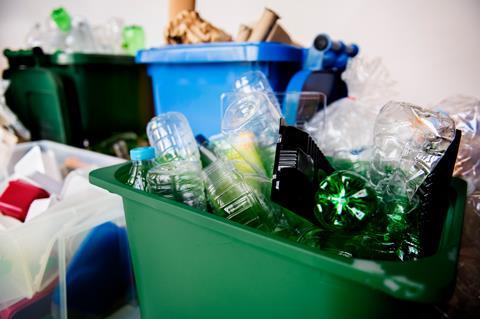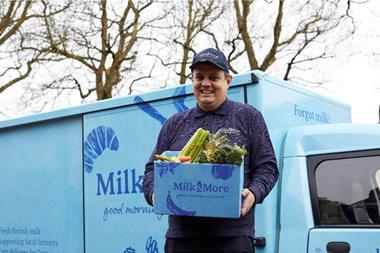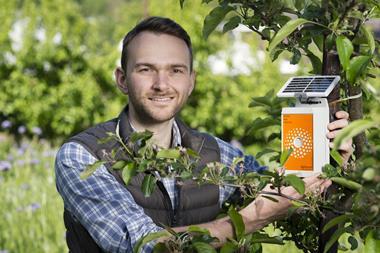
With the introduction of the plastic packaging tax (PPT), the time has come for businesses to move away from single-use plastic packaging and embrace more sustainable options. As of 1 April, manufacturers and importers of more than 10 tonnes of plastic packaging per year will be required to pay tax at a rate of £200 per tonne on packaging that contains less than 30% recycled plastic.
The PPT intends to act as a financial incentive for businesses to move towards recycled plastics, helping to boost demand for the collection and recycling of plastic waste and therefore minimise the current amount going to landfill or incineration.
In the food and drink industry, plastic packaging currently plays a crucial role – not only in protecting products, but promoting food safety and shelf life as well. So what does the incoming tax mean for food and drink manufacturers?
Well, it’s fair to say that both obstacles and opportunities lie ahead.
The main challenge is the limited availability of recycled plastics that are safe to be in contact with food products. Currently, it is very difficult to recycle plastics that can then be re-used in food packaging – soft plastics typically end up in landfill or are recycled into non-food grade material. While there is the capability to produce food-grade recycled plastics, the infrastructure isn’t yet there to produce the volume of recyclable plastic required. Consequently, the availability of supply needs to be ramped up, to enable more businesses to benefit from using food-grade recycled plastics. There is also a need to ‘go green’ beyond that of the mandate of the government, as consumers look to manufacturers to offer more environmentally friendly alternatives, putting more pressure across the supply chain.
We are already seeing a surge in prices for food-grade recycled plastics due to the restricted availability of these materials. Unsurprisingly, those who will be hit the hardest are smaller and medium food manufacturers who may not have the financial resource to compete with the bigger players for the current supply of more sustainable packaging.
Read more:
-
The plastic packaging tax must close off industry ‘escape routes’
-
Plastic packaging tax: what does it mean for UK grocery?
-
Packaging tax: industry groups welcome watered down plans
-
Deposit return scheme branded ‘nightmare’ for suppliers over glass plans
The reality is that those who choose to invest more money in alternative greener packaging materials to avoid additional costs from the PPT and reduce their impact on the environment, could be more at risk of suffering financially. They may be forced to increase costs, with the knock-on effect of driving customers towards bigger, more established competitors who can afford to keep their products at a stable price.
This could have an impact on the whole sector. Businesses at the smaller end of the scale have a far greater degree of agility, which acts as the perfect breeding ground for innovation. Their smaller size means they can adapt more easily to changing market conditions or create new products or solutions more quickly than the larger organisations. This helps businesses to grow and in turn, help the industry to evolve as a whole. By placing smaller companies at risk, the PPT could stifle creativity within the sector.
That said, there is reason for optimism. The tax is already driving creativity within the packaging industry as suppliers are rapidly working to catch up with demand for recycled or alternative materials.
There are a number of promising initiatives underway to support this transition, such as the NEXTLOOPP project, which aims to create food-grade packaging from recycled polypropylene. Further encouragement has come from government backing, after £30m in funding was announced in March for five large-scale demonstrator projects and 13 business-led research and development projects. These projects are designed to revolutionise the UK’s plastic packaging approach through a variety of circular economy business models, pioneering polymer materials and new recycling technologies.
With this comes a real opportunity for food and drink manufacturers to rethink their packaging strategy. By working with consultative suppliers to assess what options are available, businesses may be surprised to find an alternative packaging solution for their products that is functional, fit for purpose and sustainable. This is the chance to enter into discussions with each element of the supply chain to understand what will and won’t work for certain products.
It’s our role, as a supplier of gas, to support the need to, among other things, help the sector in keeping products fresher for longer. We do this using modified atmosphere packaging (MAP). What we hope to see with the new tax is more food manufacturers, that require atmospheric protection for their products, using more alternative plastics that are still compatible with MAP. This will ensure that the wider sustainability benefits of packaging, such as increased shelf life and reduced food waste, are not lost.
Although many leading businesses in the UK have already pledged to have an average 30% recycled plastic in their packaging by 2025, there are still many more that need to follow suit. The PPT should not only help speed up the transition process for those already committed, but also encourage more businesses to join efforts to tackle plastic waste.
While the obstacles facing smaller to medium-sized companies should not be overlooked, the current drive and investment towards delivering more sustainable packaging solutions should give us good reason to hope that, in time, we will be able to match supply with demand and finally turn our back on virgin plastics.



















No comments yet